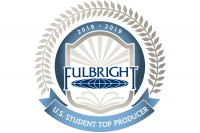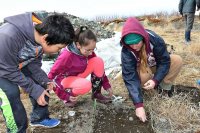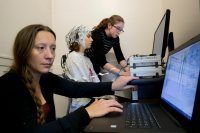
Assistant Professor of Chemistry and Biochemistry Geneva Laurita is the recipient of a major National Science Foundation grant of $581,984.
The NSF CAREER award, considered to be one of the foundation’s most prestigious awards for faculty members who are just beginning their teaching and research careers, is based on both her scientific research in solid state materials and how she brings undergraduates into that vital area of scientific exploration.
“Receiving a National Science Foundation CAREER award is a milestone accomplishment, and provides clear evidence of the high quality work that Geneva Laurita is conducting,” says Dean of the Faculty and Vice President for Academic Affairs Malcolm Hill. “Bates defines excellent teachers as individuals who are active scholars and experts in their fields, and this award is the clearest indication of both.”
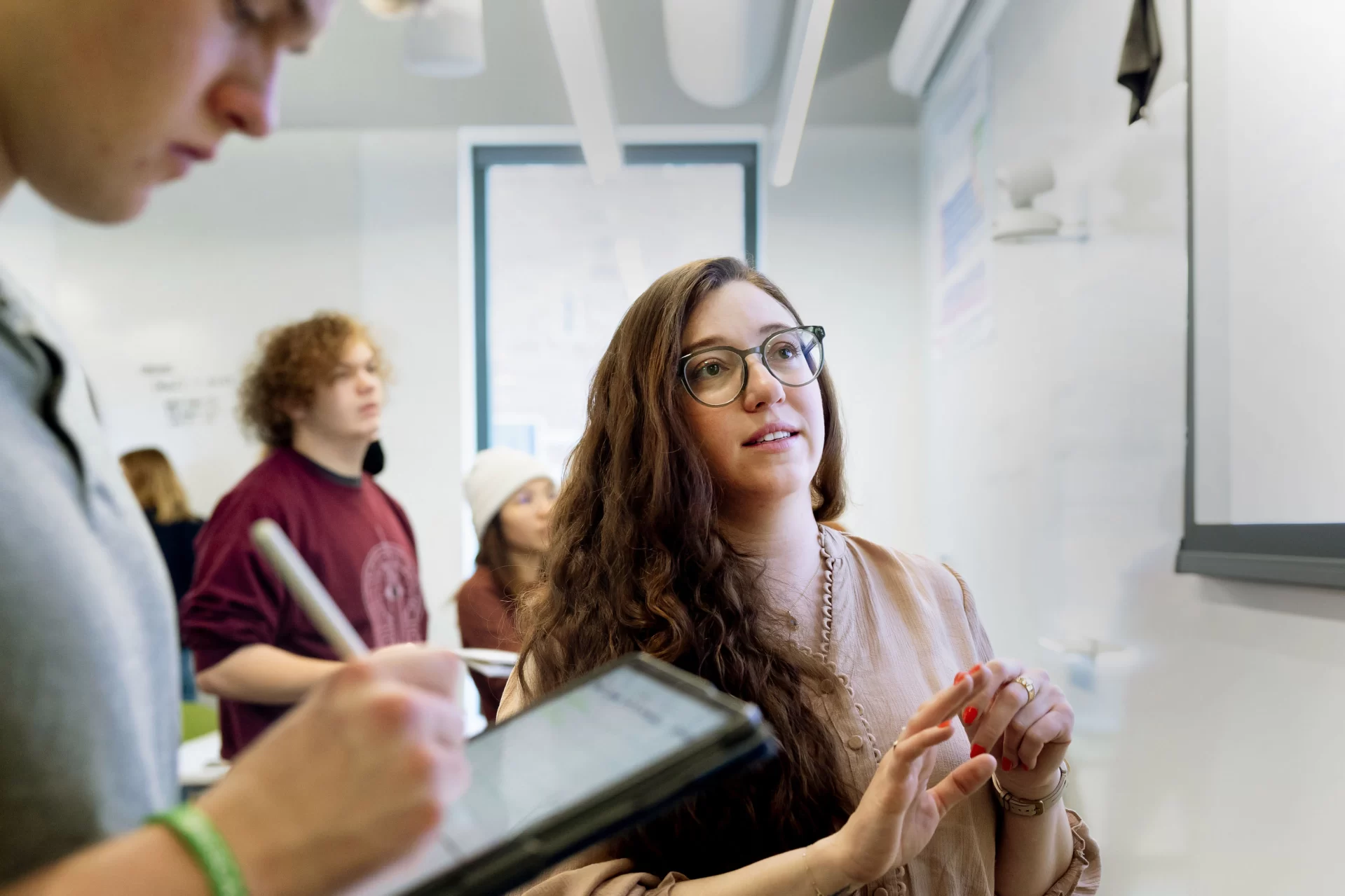
For Laurita, who joined the Bates faculty in 2017, the award means being able to do more of what she came to Bates to do: introduce students to concepts and research work that is typically available only to graduate students and rarely seen at primarily undergraduate institutions like Bates.
“I’ve always been passionate about undergraduate research, and this is a place where the undergraduates are doing research with faculty members, and it is high impact, high level research at the top of the field, working on the questions that everybody is asking. And Bates has the resources to get to do that kind of research.”
Laurita, who received the grant news just a few weeks ago, is still taking it all in. “I still am like, ‘What? Did this really happen?’ Because this is amazing.” She said this was the last year she was eligible to apply for this grant, which is intended to vault scientists into the next phase of their careers, and the only time she applied for it. “I had never applied for it because honestly, I didn’t quite have the idea yet.”
The idea came to her as a result of wanting to connect Bates undergraduates with graduate students elsewhere, and also has a direct connection to an earlier, 2019 NSF grant of $193,405 Laurita received to study a group of materials called pyrochlore oxides.
Described by Laurita to the NSF as a “poorly understood family of materials,” pyrochlore oxides have potential for many technology-driven applications, particularly replacing lead-based materials that are highly useful — and used — in technology but full of challenges because of their inherent toxicities. Pyrochlores present an opportunity for less-toxic, potentially lead-free materials.
How do you pronounce “pyrochlores”?
Listen to Geneva Laurita sound it out: “PIE-ro-klors.”
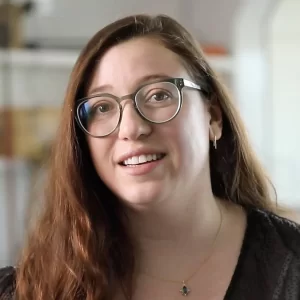
“The science component is actually based off of some things that we discovered in my current NSF grant,” Laurita says. “The thing about the CAREER grant is that it needs to have a really strong science idea as well as a really strong educational component. And it took awhile for those two things to come together for me.”
This is only the second time a Bates faculty member has received an NSF CAREER award. In 2016 neuroscience faculty Jason Castro received a Faculty CAREER award for his work in studying brain structure.
The language for Laurita’s grant specifically refers to the “national need to educate and train future generations of material scientists,” and cites Laurita’s intention to promote “participation of individuals from historically excluded and underrepresented groups.” Additionally, the program will play “a role in long-term and broader goals to diversify academic faculty, particularly at PUIs,” which stands for primarily undergraduate institutions.
The award is supported by the Solid State and Materials Chemistry program in the NSF’s Division of Materials Research, which recognizes how Laurita’s group at Bates has already been working with pyrochlores, a name that refers to the particular arrangement of atoms in this family of materials, which are formed in a crystal structure.
“We’re going to be looking at materials that we can use for energy and electronic applications,” says Assistant Professor of Chemistry and Biochemistry Geneva Laurita.
“Pyrochlores can be metals, they can be insulators, they can have magnetic properties or non-magnetic properties, it all depends on what atom you put in,” Laurita explains. They’re so adaptable that they provide what she describes as a “nice playground for chemistry.”
But this playground has serious potential for use within energy and electronic applications. “We want to think about how we can manipulate these materials, using external things such as electric and magnetic fields,” Laurita says.
That includes using advanced neutron and synchrotron X-ray scattering techniques to learn more about the structure of these materials. Laurita’s research emphasizes scattering experiments performed at national laboratories, which she was first introduced to herself in college, inspiring the career she has today.
When Laurita was an undergraduate student at the University of Northern Colorado, she did some casting around for a direction. She considered being a music major at one point and going into pharmacy at another. Then, during her junior year, she took inorganic chemistry with a professor named Robin Macaluso, who introduced her to the concept of superconductors. “Things really clicked into place,” Laurita remembers. “I was like, this is amazing.” She ended up taking a fifth year, and focusing on research with Macaluso.
In that fifth year, Macaluso sent Laurita to the National Institute of Standards and Technology, in Gaithersburg, Md., to do her first neutron-scattering experiment. “I point to that particular trip as why I am doing everything that I’m doing today. It really sparked my love for neutron science, and also this passion that I really do feel for undergraduate exposure to the national labs, because that’s when I got it.”
She flew to D.C. by herself, then took a train to Gaithersburg, arriving alone at NIST, where she was met by someone Macaluso had worked with as a post-doc. She was awestruck by the facility, by the giant instrumentation, and the sense of proximity to real, high-stakes science. She had to tag in and out of experimental areas before exposing the sample to neutrons and be trained on every kind of safety protocol.
“You get to talk to the scientists as well. And I think that the scientists are really excited to work with undergraduates because I think that they don’t get to work with that population very often.”
Recipient of a major NSF award recognizing her early-career accomplishments, Assistant Professor of Chemistry and Biochemistry Geneva Laurita explains what drew her to Bates: “a place where the undergraduates are doing research and it is a high impact, high level research.”
Today one of her favorite things is bringing Bates students into these kinds of national research facilities, such as the famed Oak Ridge National Laboratory and seeing their own reactions, those gasps of, “Oh my gosh, this is so cool.”
“One of my pillars is giving undergraduates exposure to National Laboratories,” she says, referring to the powerhouse network of 17 research laboratories under the Department of Energy. “A lot of times people don’t understand that they even exist until they’re halfway through their graduate career. They think it’s just done in institutions like universities or colleges. This grant supports travel for undergraduate students to these National Labs where we can do some of these really cool experiments,” she says.
“I do feel that sometimes, people don’t expect as high level research from undergraduates. They think you have to water down the projects, or you can’t work on such high level projects.”
Laurita was drawn to work at Bates precisely because it seemed to her that Bates faculty was engaged in “really impactful research with undergraduates.” Being able to present her data to colleagues outside of Bates, to share findings and then drop the origin story of that data into the narrative is another of her favorite things: “To be like, ‘By the way, this is all done by undergraduates.’ I just love that feeling.”
Geneva Laurita explains why, in tackling big problems, including renewable energy, “we really need to bring everybody to the table.”
As is often the case at Bates, undergraduates who do research in Laurita’s lab are now showing up as her co-authors in academic journals.
Former lab researcher Jake O’Hara ’21, a doctoral candidate at the University of Michigan, is a co-author on the article published last November in American Chemical Society. And Owen Bailey ’22, also in graduate school, and Maddie Murphy ’20, a high school teacher, are co-authors of an article published last October in the Journal of Materials Chemistry.
Courtesy of this five-year NSF CAREER grant, not only will more Bates undergraduates get this kind of experience, they’ll have a unique opportunity to work with graduate students, something Laurita herself looks forward to.
“I do spend a lot of time talking to graduate students on Zoom about what it’s like to work at a place like Bates. But you don’t really know what it’s like to be a faculty member, especially at a place like Bates where we’re doing really impactful undergraduate research as well as teaching.”
The NSF grant will change that, by providing funding to recruit and hire two graduate student interns to come to Bates during Short Term and teach a class with Laurita and then continue through the summer research with four Bates students in her lab.
“There’s going to be a lot of learning, on all different levels, which should be really exciting.”
Geneva Laurita
The idea is for the graduate students to “actually see what it’s like to work at a place like Bates.” And her Bates students will have the experience of “getting to interface with graduate students as well.” The grand plan is for Laurita to teach this Short Term course four times, collaborating and coteaching with graduate students from underrepresented groups and schools.
“It’s going to be an opportunity for everybody to get to interact with a population at different stages that we don’t usually get to interact with. There’s going to be a lot of learning, on all different levels, which should be really exciting.”
She’s gearing up to find her first set of interns, to bring in for Short Term 2024. “I’m going to try and activate my whole network.”
“The award will allow Geneva more opportunities to provide transformative educational experiences for our students with access to cutting-edge research and national laboratory experiences,” says Malcolm Hill.
“This is one of the reasons that Bates is such a great place for our students to train to become scientists within a liberal arts context. I look forward to watching this remarkable grant proposal come to fruition over the next several years.”
The NSF grant runs through 2028.
Faculty Featured
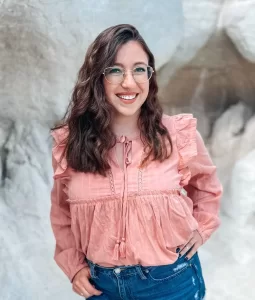
Geneva Laurita
Associate Professor of Chemistry and Biochemistry
